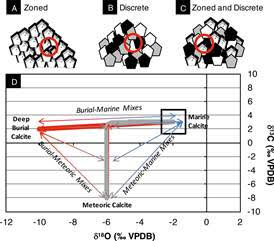The East African Rift System (EARS) includes a northern segment
that is more volcanically influenced than regions to the south. To explore the
roles of climate, tectonism, and volcanism and the architecture of sedimentary
deposits in rift basins, this manuscript by Mtelela and others provides a
sedimentologic investigation of the Pleistocene–Holocene upper Lake Beds, the
uppermost stratigraphic unit exposed throughout the Rukwa Rift Basin in
southwestern Tanzania. Integrating geologic mapping, lithofacies analysis,
petrographic microscopy, scanning electron microscopy, and radiocarbon dating
reveal alternating stacking patterns of landward- and basinward-stepping
alluvial to fluvial channel, deltaic, and profundal lacustrine strata, bounded
by unconformities. Sequence development in this rift basin is interpreted to be
controlled largely by base-level changes drive by interplay between climate
change and sediment supply, but was influenced by episodic volcanism in the
Rungwe Volcanic Province. Understanding these types of linkages is central
to efforts in evaluating the resource potential of rift basins; in this basin,
it also provides a foundational context for interpretation of regional
paleoclimate and paleoenvironmental setting of vertebrate fossils.
Interplay of structural, climatic, and volcanic controls on late Quaternary lacustrine–deltaic sedimentation patterns in the western branch of the East African Rift System, Rukwa Rift Basin, Tanzania by Cassy Mtelela, Eric M. Roberts, Robert Downie, and
Marc S. Hendrix






